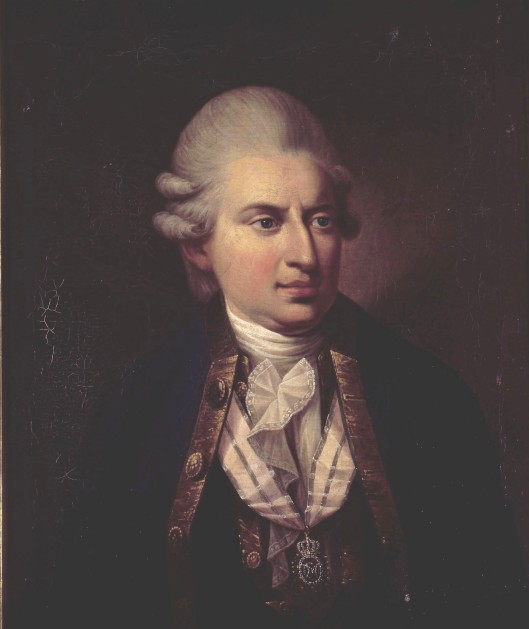Tags
Caroline Matilda of Great Britain, Dowager Queen of Denmark and Norway, Julianne of Brunswick-Wolfenbüttle, King Christian VII of Denmark and Norway, Queen of Denmark and Norway, Struensee
On June 17, 1771 the court took summer residence at Hirschholm Palace in present-day Hørsholm municipality. Here, Caroline Matilda lived happily with her son and her lover, and was painted with the Crown Prince in the style of the newly modern country life by Peter Als; this summer is described as an idyll, and has come to be referred to as the “Hirschholm Summer” in Danish historiography. She also planned a new summer villa, Frydenlund in Vedbæk.
One month later, on July 7, the Queen gave birth to a second child, a daughter named Louise Augusta. The event was coldly received at court, although the Dowager Queen Juliana Maria agreed to be the newborn’s godmother if the Queen agreed.

Caroline Matilda of Great Britain, Queen of Denmark and Norway
The King recognised the paternity of the child, who officially became a Princess of Denmark and Norway, but the Queen’s behaviour and the girl’s resemblance to Struensee caused the courtiers to begin to think that he was probably the biological father of the princess, and to refer to her as “la petite Struensee”.
However, during the divorce proceeding against Caroline Matilda, her daughter was never mentioned in any document, because Struensee had previously given “satisfactory answers” about the circumstances of her birth.
Shortly after Louise Augusta’s birth, rumours began in the court and population that Caroline Matilda and Struensee wanted to imprison the King and declare the Queen regent; these accusations in fact were absurd in themselves, as Christian VII was more a protection than an obstacle to the lovers.
By the end of 1771 the lovers began to worry, and Caroline Matilda suspected that the Dowager Queen Juliana Maria planned a plot against her and Struensee. In October, Struensee thought it necessary to abolish freedom of the press, which was one of his major reforms.
According to legend, Struensee rushed to the Queen’s feet, begging her to let him leave the country for both their sakes, but Caroline Matilda refused to let him go. At the same time he confessed to one of his friends it was only thanks to the support of the Queen that he retained his post.
On November 30 the court moved to Frederiksberg Palace, where security measures had been increased by orders of Struensee. Then the order to disband the Royal Guard caused a military march to Fredericksberg on Christmas Eve, and the court became clear about the real mood of the people.

Johann Friedrich Struensee
At the same time, there were rumours that the British diplomat Robert Murray Keith proposed to give Struensee a large sum of money if he were to leave the country, but there is no documentary evidence for this.
The court returned to Copenhagen on January 8, 1772. By this time, Struensee and Caroline Matilda were already in serious danger. In early January, a former supporter of Struensee, Count Schack Carl Rantzau, discontented with the fact that Struensee did not accept his political views, decided to overthrow the favourite.
Dowager Queen Juliana Maria had during the summer watched the progress of events from Fredensborg Palace, where she lived in seclusion with her son. Rantzau gave her fake evidence that the lovers were going to overthrow the King, prompting the Dowager Queen to act against them.
Details of the case were specified on January 15, at the Dowager’s residence, and the execution of their conspiracy was scheduled for the night of January 16–17 after the end of a masked ball at the Hofteatret in Christiansborg Palace. Although Rantzau hesitated at the last moment, everything went according to plan: at the agreed time, Struensee, Brandt, and their followers were arrested.
On the same night Caroline Matilda was captured by Rantzau who, with cynical cruelty, hastily escorted her with her daughter to Kronborg Castle, in Helsingør, where they remained imprisoned under close surveillance by guards.

Christian VII, King of Denmark and Norway
She was only accompanied by the maid-of-honour Frederikke Louise Møsting, who was not sympathetic towards her and who had been ordered by Rantzau to accompany her. As the Queen later told the court, on the evening of January 17 she saw from the windows of her chamber the festive illuminations made in honour of her fall in Copenhagen.
Only a few friends were allowed to visit the Queen at Kronborg, where her only consolation was her daughter, because her son the Crown Prince stayed with his father. At Kronborg, she was attended by the maids-of-honour Frederikke Louise Møsting, Sofie Magdalene Sperling, Margrete Vilhelmine Schmettau, her chamberlain count Christian Frederik Holstein and courtier Karl Adolf Råben, “who were all against her”, while her favourite maid-of-honour Charlotte Amalie Trolle had been refused permission to accompany her.
The fall of Caroline Matilda was necessary to overthrow Struensee, although he had not achieved power thanks to the Queen, but because of his dominance over the King; however, the Queen was a powerful ally of his, and for this reason it was necessary to remove them at the same time.
